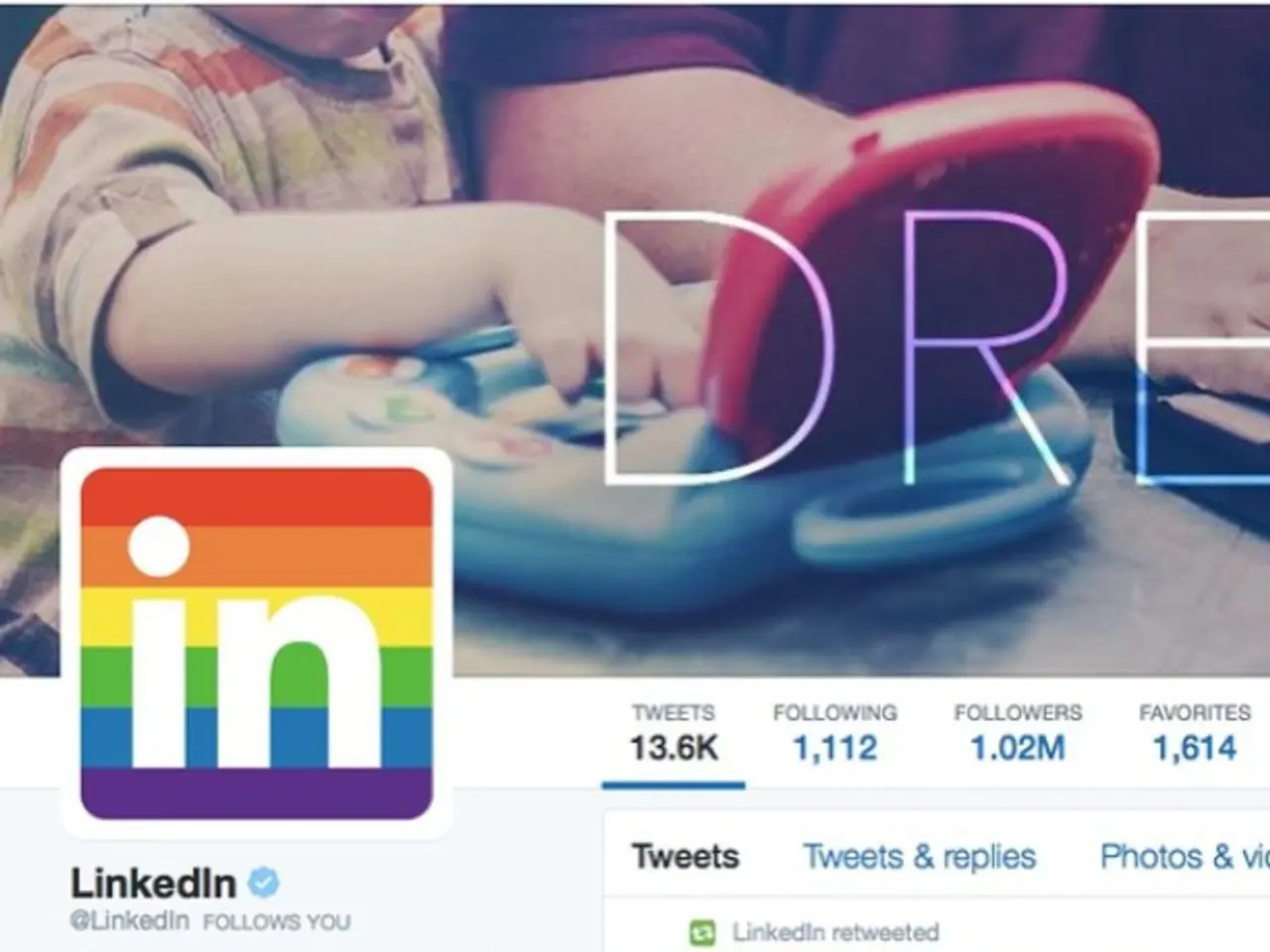Streamlined Strategies for Boosting Your UX Profession with LinkedIn
In today's digital age, networking isn't just limited to in-person meetings. A well-optimized LinkedIn profile can be a game-changer, especially when seeking opportunities in the User Experience (UX) field. Here's a three-pronged strategy to help you stand out: strategic keyword integration, consistent profile enhancements, and engaged community involvement.
Strategic Keyword Integration
Identify industry-specific keywords related to UX, such as "user experience design," "wireframing," "prototyping," "user research," "interaction design," and relevant tools like "Figma," "Sketch," or "Adobe XD." Extract keywords from UX job postings you are interested in to capture skills, job titles, and required tools or methodologies.
Incorporate these keywords naturally across your profile: in the headline, About section, Experience descriptions, and even in posts you share. For example, a headline might read: "UX Designer | Human-Centered Design | Wireframing & Prototyping Expert". Use bullet points and clear formatting in the About section to highlight competencies and goals, enriching it with keywords.
Consistent Profile Enhancements
Keep your profile current by regularly updating your Experience, Projects, and Skills sections to reflect your latest work, accomplishments, and new tools learned. Post content related to UX trends, project wins, or design insights with relevant keywords to increase profile visibility and demonstrate expertise. Review and tweak keywords periodically to stay aligned with evolving UX industry demands and job postings.
Customize your LinkedIn URL and use a professional, clear profile photo and banner that reflect your UX profession and personal brand.
Engaged Community Involvement
Join LinkedIn groups focused on UX design, user research, and related fields to engage with industry peers. Participate actively by commenting on discussions, sharing articles, or posting questions to build credibility and increase network reach. Use these groups to stay updated on UX trends and job openings and to connect directly with recruiters and hiring managers.
Remember to keep discussions civil and professional to showcase your professionalism. Regularly updating your LinkedIn profile every 3-4 months is recommended. A clear and specific LinkedIn profile makes it easier for others to give you what you want.
Employers prefer candidates who know what they want and are passionate about it. If you are unemployed and seeking a job, make your profile about what you're looking for. Good participation can lead to being noticed by others.
Lastly, LinkedIn is a social network, not primarily an advertising platform. An updated LinkedIn profile can help online recruiters find you with a quick search. Focus on discussions where your expertise is clear, and remember that participating in groups is crucial for improving your industry profile. Join groups related to your career, including those for developers and graphic designers. Revising your LinkedIn profile improves your chances of showing up in a search, but joining groups can offer additional benefits.
- To demonstrate expertise in the UX field, strategically incorporate keywords such as "user experience design," "interaction design," "UI design," "wireframing," "prototyping," and "graphic design" in your LinkedIn profile.
- Regularly update your LinkedIn profile with fresh content, including projects, accomplishments, and new skills, and utilize local chapters or LinkedIn groups focused on UX design, user research, development, and graphic design to engage with industry peers.
- Customize your LinkedIn URL and profile image to reflect your UX profession and personal brand, using clear formatting, bullet points, and relevant keywords to heighten visibility.
- Utilize social media, such as LinkedIn, as a platform for career development and education-and-self-development, sharing updates, articles, or postings related to UX trends, entertainment, or career opportunities to showcase your expertise and expand your network.




